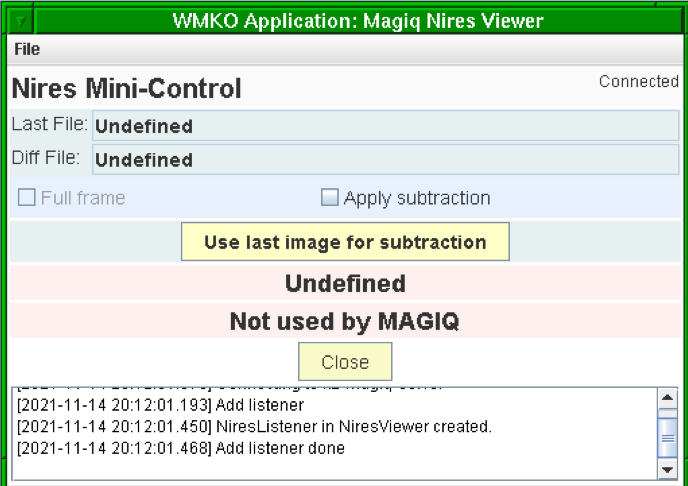The observer can request to use the slit-viewing camera as a guider. In this option, the observer does not have control over the slit-viewing camera. This will be shown on the Magiq Nires Viewer.

During scam guiding the images will be displayed on Magiq and not on the quicklook tool
The minimum exposure time is 1 second and the minimum readout time (subframe 64x64 pixels) is about 2 seconds. So the total exposure time is 3 seconds. However, guiding is performed by a sequence of 10 subframes and one full frame. The total readout time for a full frame is 10 seconds. Therefore, this mode is suggested if the spectral exposure time is greater than 60 seconds (to avoid unnecessary wait time).
The OA can perform the acquisition and alignment (putting the slit over the target). Guiding can be performed using the target on the slit (using a slit guiding algorithm) or using a field star as a guide star.
Acquision of targets that will be observed for hours can be done by the observer. This mode will not experience the flexure between the optical guider and the slit. This flexure has been measured to be at most of 1.6 arcsec if the instrument rotates by 180 degrees while tracking a target.
Once the acquisition is completed the observer can request scam guiding. During this phase slit-viewing images will no longer appear on the quick look but they will be displayed on Magiq (select slit guider).
Control of the slit-viewing camera can be recovered by asking the OA for it at the end of the observing sequence if needed. The status of the slit-viewing camera will be displayed on the Magiq Nires Viewer.